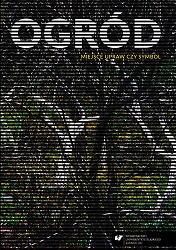Bio…
Bio…
Author(s): Aleksandra Giełdoń-Paszek
Subject(s): Fine Arts / Performing Arts, Photography, Visual Arts, Sociology of Art
Published by: Wydawnictwo Uniwersytetu Śląskiego
Summary/Abstract: A spectacular beginning of bio-art is ascribed to Eduardo Kac’s transgenic experimen GFP Bunny(2000). Since then, in art bio there have been distinguished number of trends, such as: a transgenic art, a microbial art, an agar art. A separate section of bio-art is the work with cells and tissue culture (in vitro). All trends are characterized by the work on unstable materials, the so-called wet media/ wetware, an ephemeral, a processuality, interactivity and the use of highly advanced technologies such as atransgenesis, neuropsychology and robotics. The biological world also inspires designers, builders and architects. The source of inspiration is mainly the physiology of living organisms, their structure and construction.In the bio art there also has appeared a critical movement. It deals with the problem of the relation between science and living organisms, the fight against commerce, the protection of life at each level. This results in a reevaluation of the relationship between humans and other species, which implies a departure from anthropocentrism. A critical aspect of this art is also a question about humans’ right to control their own evolution, to create new forms of life outside the natural order of living. On the one hand, bio art raises concerns, but on the other, it evokes a sense of the inevitability of transformation, of which we are witnesses. It is also heterogeneous in its ideological mssage. It questions the paradigm of the relationship between nature and culture, emphasizing morphism, liquidity and relativity of existing divisions, but it is involved in technology and a praise progress. Especialy dangerous aspect of bio-art is associated with biohacking and bioterrorism.
Book: Ogród – miejsce upraw czy symbol
- Page Range: 95-106
- Page Count: 12
- Publication Year: 2017
- Language: Polish
- Content File-PDF

